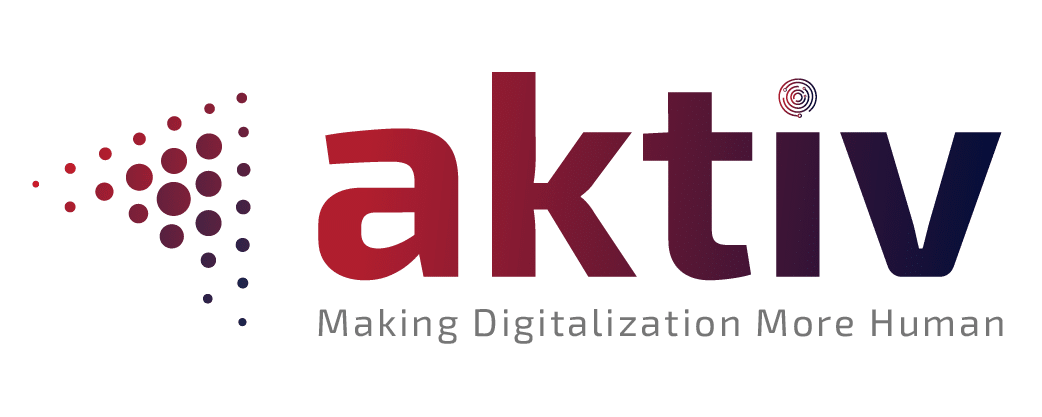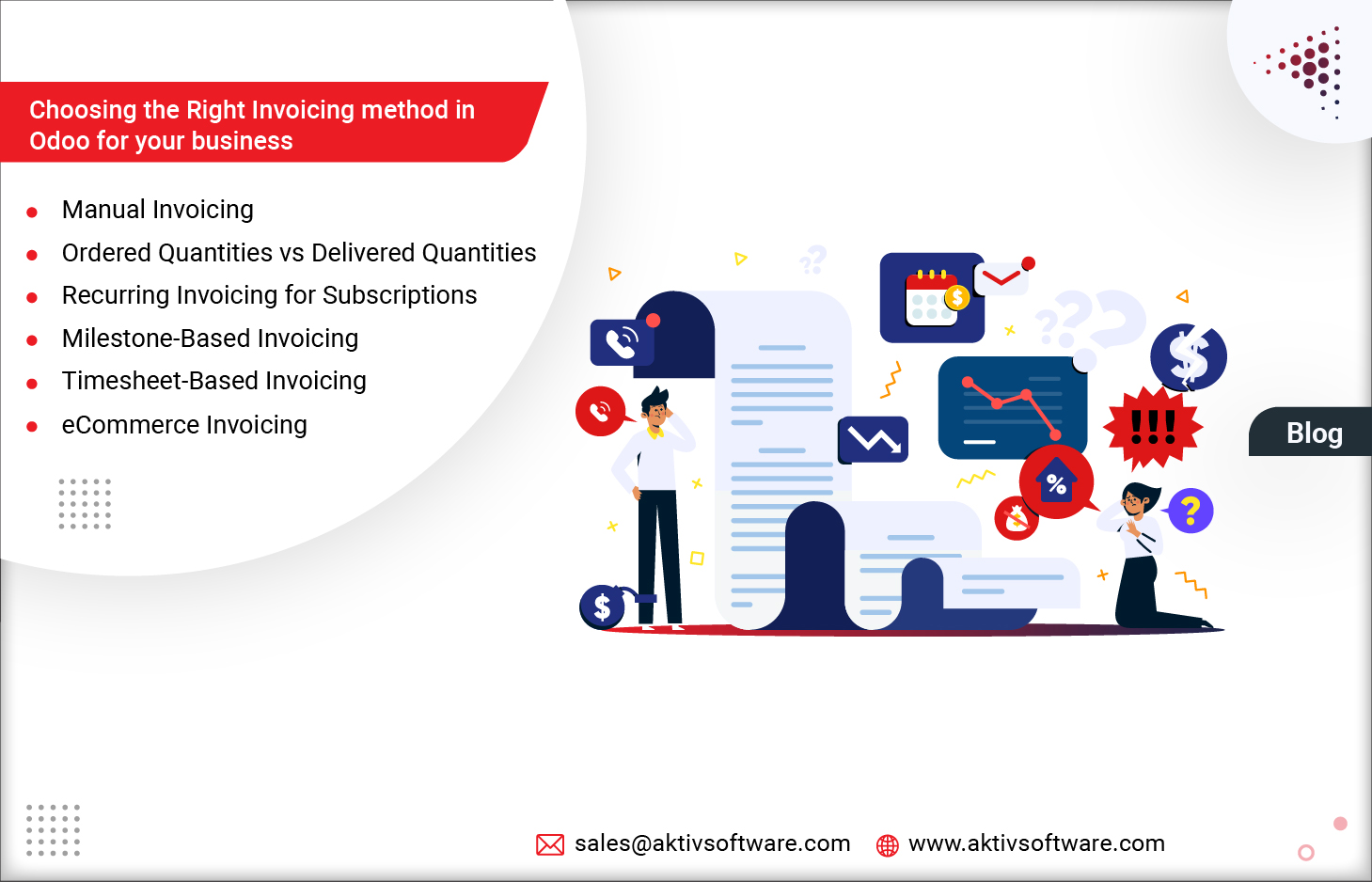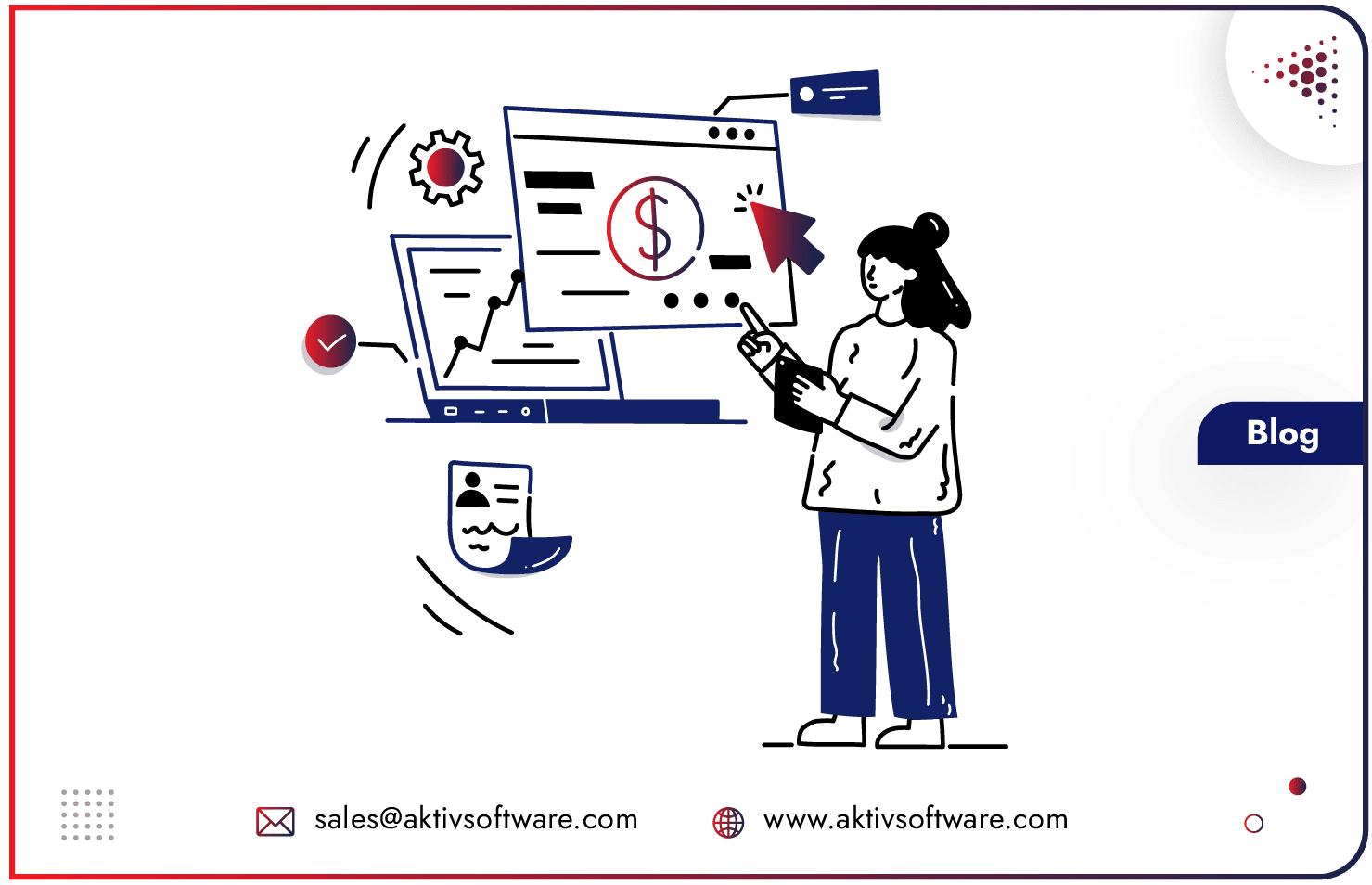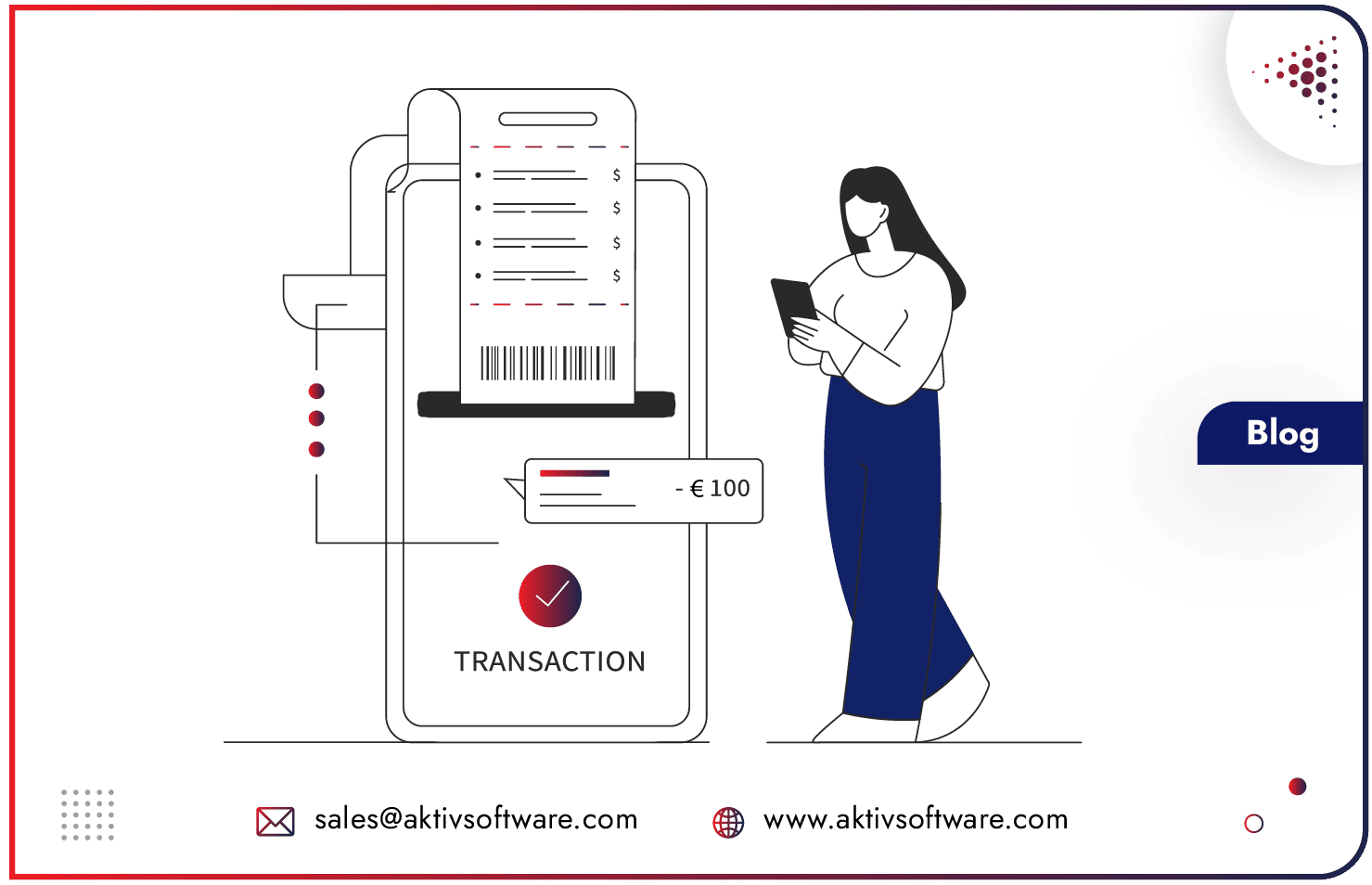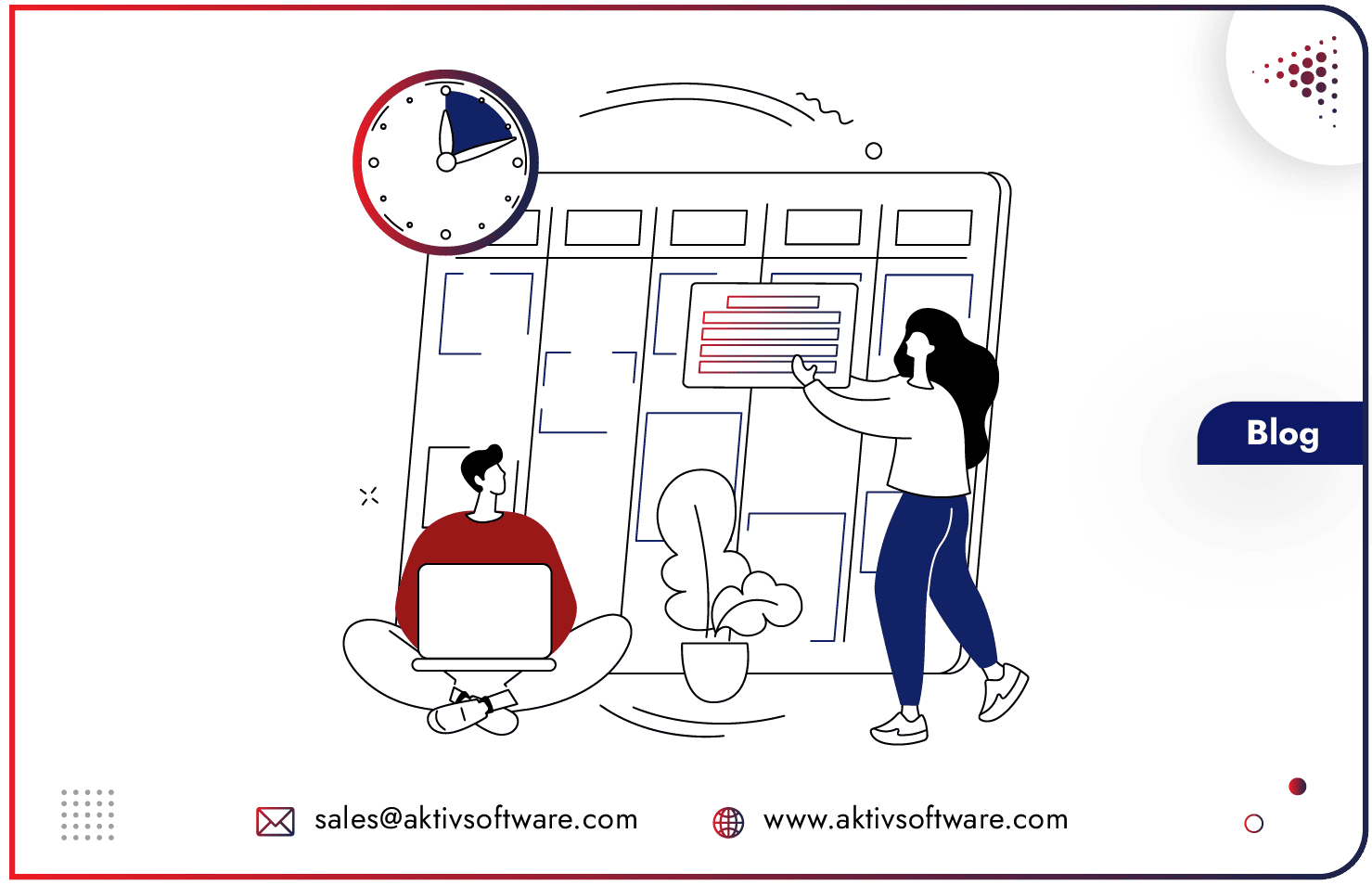The efficiency of your invoicing process can significantly influence your business operations, affecting everything from timely payments to customer satisfaction.
This blog will discuss the different Odoo Invoicing methods a business can use, and determine which is best for your business.
Types of Invoicing Methods in Odoo
Pick Your Method, Odoo Handles the Rest!
1) Manual Invoicing
The manual invoicing method is the most commonly used method by businesses that sell products or services on a fixed-price basis and creates a bespoke invoice every time based on their customer’s requirements.
With the manual billing method in Odoo, you can set up the pricing of the product on a per-unit basis or using advanced pricelist rules and when the products are manually added to the invoice the pricing is calculated automatically based on the configurations made on the product and pricelist.
Odoo Invoicing Policy for Ordered Quantities vs. Delivered Quantities
With manual invoicing, you have the option to choose from either generate an invoice based on ordered quantities or delivered quantities.
Ordered Quantities Invoicing: This is the default invoicing policy of Odoo in which an invoice is created on the confirmation of a sales order. The invoice takes into consideration the items that are ordered and creates a full invoice for the entire order.
Delivered Quantities Invoicing: If you set the invoicing policy to Delivered Quantities, the invoices only get generated based on the delivery of products or services contained in the sales order.
This rule is often used for businesses that sell materials, liquids, or food in large quantities. In these cases, the ordered quantity may differ slightly from the delivered quantity, making it preferable to invoice the quantity delivered.
Pros: The primary advantage of manual invoicing is its high degree of customization. This method allows businesses to tailor each invoice to the specific needs of the client, making it ideal for companies that offer bespoke services or products.
Additionally, it is well-suited for low transaction volumes, where the time investment in creating individual invoices is manageable.
Cons: Manual billing method can be time-consuming and prone to human error, especially as transaction volumes increase. This method is not scalable for larger businesses with high transaction volumes, as it can lead to inefficiencies and mistakes in the billing process.
Best For:
- Freelancers and consultants
- Small businesses with personalized services
- Businesses with irregular billing cycles
2) Odoo as a Subscription Billing Platform
Recurring invoicing automates the billing process for services or products provided regularly, such as monthly or annually. This method is particularly beneficial for businesses that operate on a subscription model.
The Odoo Subscriptions app helps the business create recurring invoices for products or services sold on a subscription basis.
Based on the subscription settings, you can choose to either manually or automatically create recurring invoices in Odoo at set time intervals and also pair it with other automated actions such as sending out reminder emails to your customers.
Pros: Recurring invoicing saves time by automating repetitive tasks, and ensuring that invoices are generated and sent out regularly without manual intervention. This automation helps in maintaining timely billing and payments, reducing the risk of missed invoices and improving cash flow predictability.
Cons: The main downside of recurring invoicing is its lack of flexibility for customization. Businesses with varying billing amounts might find it challenging to adjust the invoices as needed. Moreover, it requires a robust system to handle subscription management and to ensure that the invoices are accurate and timely. *Thankfully, Odoo can handle it easily*
Best For:
- Subscription-based services
- Membership-based businesses
- SaaS companies
3) Milestone Invoicing in Odoo
Milestone-based invoicing allows businesses to bill clients at different stages of a project. Payments are tied to the completion of specific milestones, ensuring steady cash flow and aligning payments with project progress.
Milestone-based invoicing is useful in large-scale long-term projects which can be split into several milestones.
Odoo allows the creation of service products that can be invoiced based on milestones. When an order is placed with a milestone product, a project or a task is created, and a user is allowed to manually create and set milestones with deadlines. These milestones are linked with tasks and their progress.
Upon completion of a milestone, an invoice can either be manually or automatically generated for the amount corresponding to the milestone.
Pros: This method aligns payments with project progress, providing a clear financial roadmap for both the business and the client. It ensures steady cash flow throughout the project, reducing financial risk and making it easier to manage project budgets.
Cons: Milestone-based billing method requires clear definitions and agreement on milestones to avoid disputes. If milestones are not met or are poorly defined, it can lead to conflicts between the business and the client. Additionally, this method can be more complex to manage, requiring diligent project management to ensure milestones are accurately tracked and billed.
Best For:
- Software Development
- Construction Company
4) Timesheet Invoicing
Timesheet-based invoicing is perfect for service-oriented businesses where work hours vary. Employees log their hours, and customers are billed based on the actual time spent on their projects. This method promotes transparency and ensures clients are billed accurately for the services rendered.
Many service companies render their services on a time and materials basis and in such cases, usually the total price of a service isn’t pre-determined. In such businesses the invoice is generated based on the time (hours, days etc.) spent on rendering services.
Odoo can invoice for time and various other expenses (e.g. transport, lodging), as well as purchases needed to fulfill an order. The Odoo Project App contains multiple tasks and each task is linked with a timesheet. These timesheets are linked with sales orders and based on time logged by users, you can create invoice specific to the time spent on rendering services.
Pros: This method ensures accurate billing based on the actual work done, promoting transparency between the business and the client. It is highly flexible, allowing for variations in work hours and billing accordingly. This approach also provides clients with a clear understanding of how their money is being spent, enhancing trust and satisfaction.
Cons: Timesheet-based invoicing requires diligent time tracking, which can be complex to manage, especially for large teams or projects with many variables. Accurate timesheet management is crucial to avoid discrepancies and disputes with clients.
Best For:
- Consulting and Service Based Companies
- Agencies (marketing, legal, etc.)
- Freelancers billing by the hour
5) eCommerce Invoicing
eCommerce invoicing is designed specifically for online businesses that sell products through an online store.
This invoicing method integrates seamlessly with eCommerce platforms, automatically generating invoices for each sale made through the online store. It automates the entire invoicing process, from capturing customer details and purchase information to generating and sending invoices.
Odoo’s eCommerce app is natively linked with its invoicing capabilities, making it easy to automate the eCommerce invoicing process, applying the correct tax rates, shipping fees, and discounts.
Pros: This method automates the invoicing process for online sales, reducing the need for manual intervention and minimizing errors. The seamless integration with eCommerce platforms ensures that invoices are generated accurately and promptly, improving the overall efficiency of the billing process.
Additionally, eCommerce invoicing supports various payment methods, catering to different customer preferences and making the checkout process smoother and more user-friendly.
Cons: eCommerce invoicing can be technically demanding, requiring proper configuration and integration to ensure smooth operation. Businesses without in-house technical expertise might need to invest in professional services for setup and maintenance.
Furthermore, this method relies heavily on the accuracy and completeness of the product catalogue and pricing information within the eCommerce platform, which requires regular updates and checks to avoid discrepancies.
Best For:
- Online Retailers
- Dropshipping Businesses
You Name the Invoicing Method, Odoo Has Your Back!
Invoicing can often be a complex and time-consuming process, but with Odoo, it becomes streamlined and efficient.
Odoo offers a variety of invoicing methods tailored to different business needs, from manual and milestone-based invoicing to timesheet-based and e-commerce invoicing. This flexibility ensures that you can choose the most appropriate method for your business model, improving cash flow and customer satisfaction.
Additionally, Odoo’s integration capabilities and customization options allow you to create invoices that perfectly align with your business processes.
Ready to simplify your invoicing process? Contact our Odoo experts today for a free consultation.

